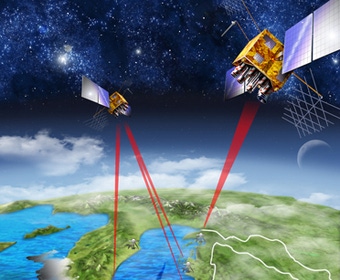The European Commission this week designated two providers to offer satellite-based media and communications services, allocating Inmarsat and Solaris Mobile spectrum in the 2GHz S-band.
May 15, 2009

The European Commission this week designated two providers to offer satellite-based media and communications services, allocating Inmarsat and Solaris Mobile spectrum in the 2GHz S-band.
Under the EC award announcement, Inmarsat has been awarded 30MHz of S-band radio spectrum to run its satellite programme, known as EuropaSat, across the 27 member states of the European Union.
Solaris Mobile, which is owned by Eutelsat Communications and SES Astra, received a similar amount of spectrum. Both providers are likely to have a particular focus on rural customers that are ill-served by existing fixed and wireless offerings and will deliver TV, location-based services, video and radio and internet connectivity.
But Solaris has already run into trouble. It has confirmed that the W2A satellite, which it launched on April 3, is suffering an “anomaly”, which may affect the satellite’s capability to provide services.
Earlier this month Eutelsat introduced a satellite-based consumer internet service in the UK using the Ku-band of spectrum. Catering for consumers in rural areas, Eutelsat’s Tooway service offers 2Mbps internet connectivity on the downlink and 256Kbps on the uplink for £29.99 per month.
However, the satellite operators may get competition from traditional mobile players in the rural areas as the EC goes about addressing the issues of 2G spectrum refarming.
According to research house Analysys Mason this week, the refarming of 2G spectrum will be key to enabling mobile broadband coverage outside major population centres.
Liberalising the usage of the 850/900MHz frequency bands, in which 2G services, such as GSM, currently operate, is a significant emerging trend, which will extend the reach of 3G services to rural areas not covered by operators’ existing 2100MHz 3G networks.
“Cost-effective coverage of large, thinly populated land masses is the key benefit of introducing UMTS in the 850MHz or 900MHz bands,” said Catherine Viola, senior analyst at Analysys. At lower frequencies, radio signals propagate further, meaning that fewer sites are needed for network rollout. At 900MHz, for example, networks can be built and operated with cost savings of around 50-70 per cent compared with networks deployed in 2100MHz core-band 3G spectrum, Analysys claims.
UMTS900 networks have already been launched successfully in Europe, Asia Pacific and South America, by DNA and Elisa in Finland, Síminn in Iceland, Optus in Australia, Vodafone in New Zealand, AIS in Thailand and Digitel in Venezuela.
About the Author(s)
You May Also Like







.png?width=300&auto=webp&quality=80&disable=upscale)

.png?width=300&auto=webp&quality=80&disable=upscale)
_1.jpg?width=300&auto=webp&quality=80&disable=upscale)



.png?width=800&auto=webp&quality=80&disable=upscale)